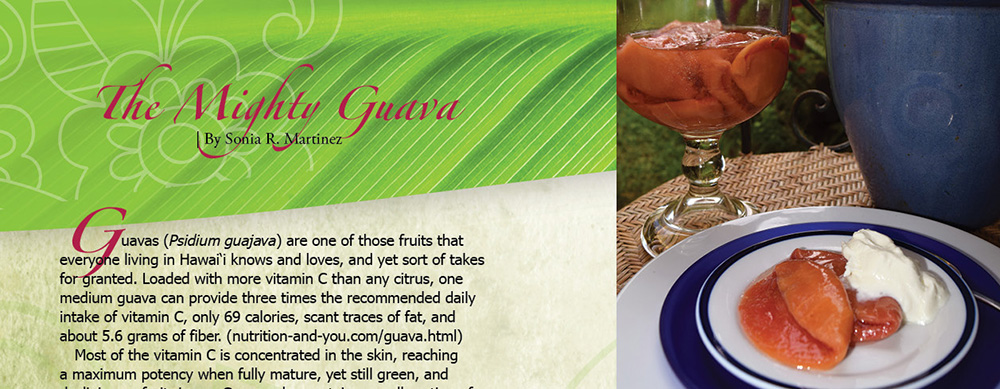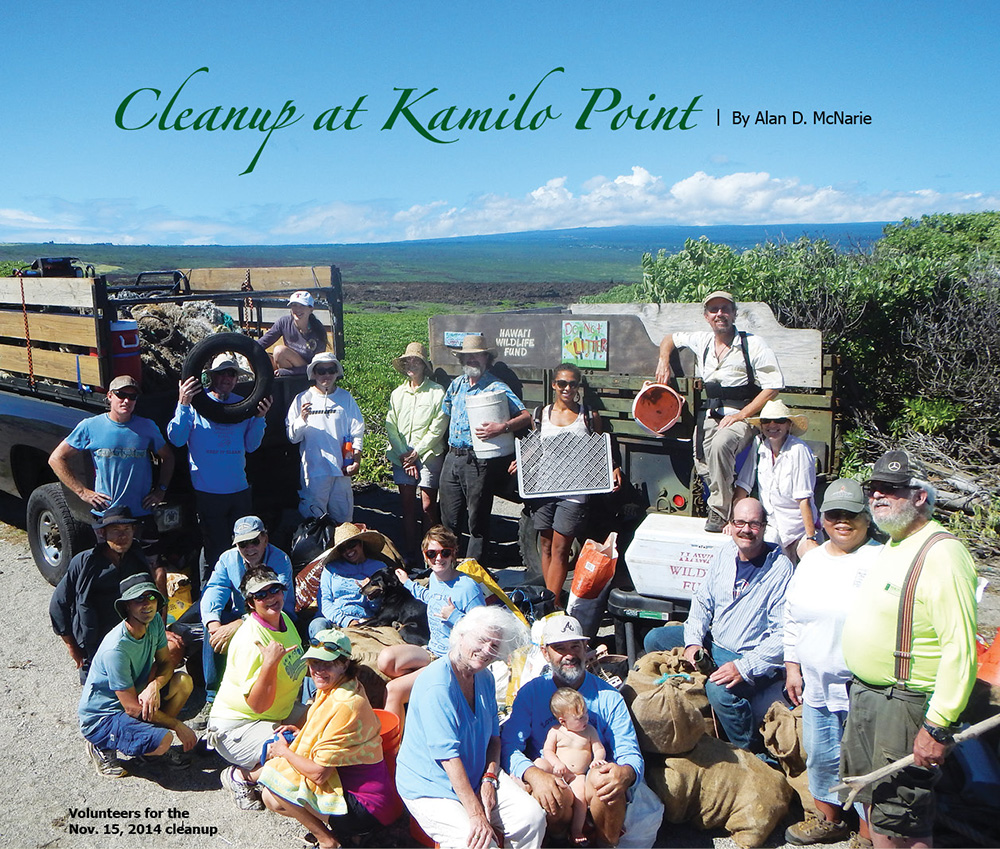
The Mighty Guava

By Sonia R. Martinez
Guavas (Psidium guajava) are one of those fruits that everyone living in Hawai‘i knows and loves, and yet sort of takes for granted. Loaded with more vitamin C than any citrus, one medium guava can provide three times the recommended daily intake of vitamin C, only 69 calories, scant traces of fat, and about 5.6 grams of fiber. (nutrition-and-you.com/guava.html)
Most of the vitamin C is concentrated in the skin, reaching a maximum potency when fully mature, yet still green, and declining as fruit ripens. Guavas also contain a small portion of vitamins B1 and B2.
There are many varieties, and they come in different shapes and sizes—from a small, round ovoid—to pear-shaped, they can weigh from a few ounces up to one pound. Some are grown commercially and some can be found growing wild. The skin is usually yellow when ripe, and the flesh may be white, yellow, pink, or red. Fruit ranges from thin to thick-skinned and from few to lots of seeds.
The best varieties have few seeds and generous firm pulp. Flavors vary from sweet to acid, while the distinctive aroma may be mild and pleasant or strong and penetrating.
Depending on the variety and the area grown, guavas can be found almost year round on this island. Several growers grow them commercially and some sell at farmers markets. There are always some growing in backyards and back roads. Even with all this abundance of fruit, guavas are not used much except for juice, ice cream, jellies, and jams.
In my native Cuba and wherever there is a concentration of Cubans, you can find canned guava marmalade, guava shells in syrup, and guava paste that can be sliced and served with cream cheese and crackers, which is the favored way, or also used as fillings for pastries.
The following can be made with any variety of guavas, including the ones growing wild along the sides of the roads. Just be sure to not pick them off the ground, as they might already have bugs.
Guava Shells in Syrup
This is a very typical dessert in Cuba and usually found already canned. Since I could not find it here I decided to experiment and see if I could make it the way I remembered them.
Gather nice, ripe unblemished guavas. Wash and carefully trim the ends; peel thinly, since you want as much of the shell as possible. Cut in halves and, with a spoon, scoop out the seedy center. Reserve these centers, the trimmings and the peelings for later use.
For the Syrup
For every cup of water, use one cup of sugar.
Bring to boil in a large saucepan or pot. When syrupy, drop a few guava shells in to boil, (not too many at one time, as you don’t want to crowd them while they are cooking) for about five minutes on each side, or until they kind of fold into themselves.
Scoop out with a slotted spoon, place in a container, and cook another batch of shells until all shells are cooked. To preserve: place the shells in clean, hot sterilized jars, cover with the remaining hot syrup, and seal. Syrup will have turned a beautiful ruby color. Process as you would any canning jar.
Serve as is, or better yet, with a spread of cream cheese, a scoop of Crème Fraîche, Queso Fresco or fresh chèvre (soft goat cheese) on the side.
Guava Marmalade
Take the reserved trimmings, peelings, and the scooped-out centers of the guavas you prepared for shells, seeds, and all. Place them in a large saucepan or pot with an equal amount of sugar. Do not add water.
Cook down at medium temperature until the mixture forms its own syrup. When it boils down to a nice syrupy consistency, place through a food mill or medium mesh colander. Discard the seeds and whatever chunky debris remains. If the marmalade is still too thin, you can cook down some more until it reaches your desired consistency.
Uses for Thin Marmalade
–Use as thick syrup, over pancakes, waffles, pound cake, or ice cream.
–Blend it with minced garlic and brush over chicken or pork to be grilled or broiled.
–Add vinegar and turn into vinaigrette.
Contact writer Sonia R. Martinez


